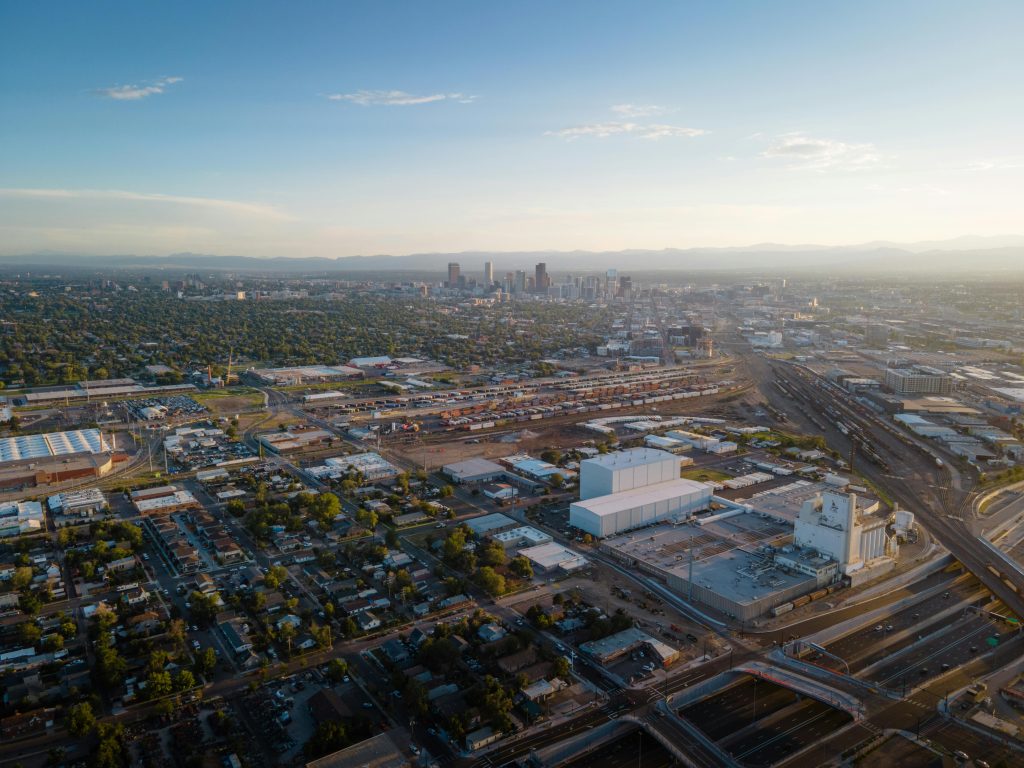
By: Bria K.
Denver, Colorado, renowned for its stunning natural landscapes, robust economy, and vibrant culture, has long been a focal point for real estate and land development. As the city continues to experience significant growth and urban expansion, the opportunities and considerations associated with land development in Denver have captured the attention of developers, investors, and urban planners alike. In this blog post, we will dive into the landscape of land development in Denver, exploring the city’s unique characteristics, potential opportunities, and important considerations for those interested in participating in this dynamic market.
Nestled against the backdrop of the majestic Rocky Mountains, Denver boasts a diverse and picturesque landscape that has contributed to its appeal as a desirable place to live, work, and play. The city has experienced rapid population growth, driven by a strong economy, favorable quality of life, and an influx of young professionals and families seeking new opportunities. This population growth has led to increased demand for residential, commercial, and mixed-use developments, presenting a wealth of opportunities for land development within and around the city.
Denver’s Unique Landscape and Growth Dynamics:
Opportunities in Residential Development:
The demand for housing in Denver has created significant opportunities for residential land development. From upscale urban condominiums and townhomes to suburban single-family homes and multifamily complexes, the market for new residential properties continues to thrive. Developers have the chance to capitalize on the city’s evolving housing needs, catering to diverse demographics and lifestyles while incorporating sustainable and innovative design approaches.
Commercial and Mixed-Use Development Potential:
Denver’s growing economy and status as a regional business hub have fueled demand for commercial and mixed-use developments. The city’s downtown area, in particular, has witnessed a surge in mixed-use projects that combine retail, office space, and residential units, catering to the preferences of an urban workforce and residents seeking a live-work-play environment. Additionally, emerging neighborhoods and transit-oriented developments present compelling opportunities for commercial and mixed-use projects that align with the city’s vision for sustainable urban growth.
Considerations for Land Development in Denver:
- Regulatory Environment: Navigating Denver’s regulatory landscape, including zoning ordinances, land use policies, and development regulations, is critical for successful land development. Understanding the city’s planning and permitting processes is essential for ensuring compliance and securing approvals for new projects.
- Infrastructure and Transportation: Considerations related to infrastructure, transportation networks, and access to amenities are pivotal in land development decisions. Proximity to public transportation, infrastructure improvements, and walkability are influential factors that can enhance the appeal and viability of development projects.
- Sustainability and Community Engagement: Denver places a strong emphasis on sustainable development practices and community engagement. Developers are increasingly incorporating green building standards, energy-efficient designs, and community-focused amenities to align with the city’s sustainability goals and foster positive relationships with local communities.
- Market Analysis and Demographics: Conducting thorough market analysis and understanding demographic trends is crucial for identifying viable development opportunities and tailoring projects to meet the needs and preferences of Denver’s diverse population.
In conclusion, land development in Denver, Colorado, presents an array of opportunities for those looking to participate in the city’s dynamic real estate market. By understanding the unique characteristics of Denver, recognizing the potential for residential, commercial, and mixed-use development, and carefully considering the regulatory, infrastructure, and community-related factors, developers and investors can position themselves to contribute to the city’s continued growth and prosperity.
